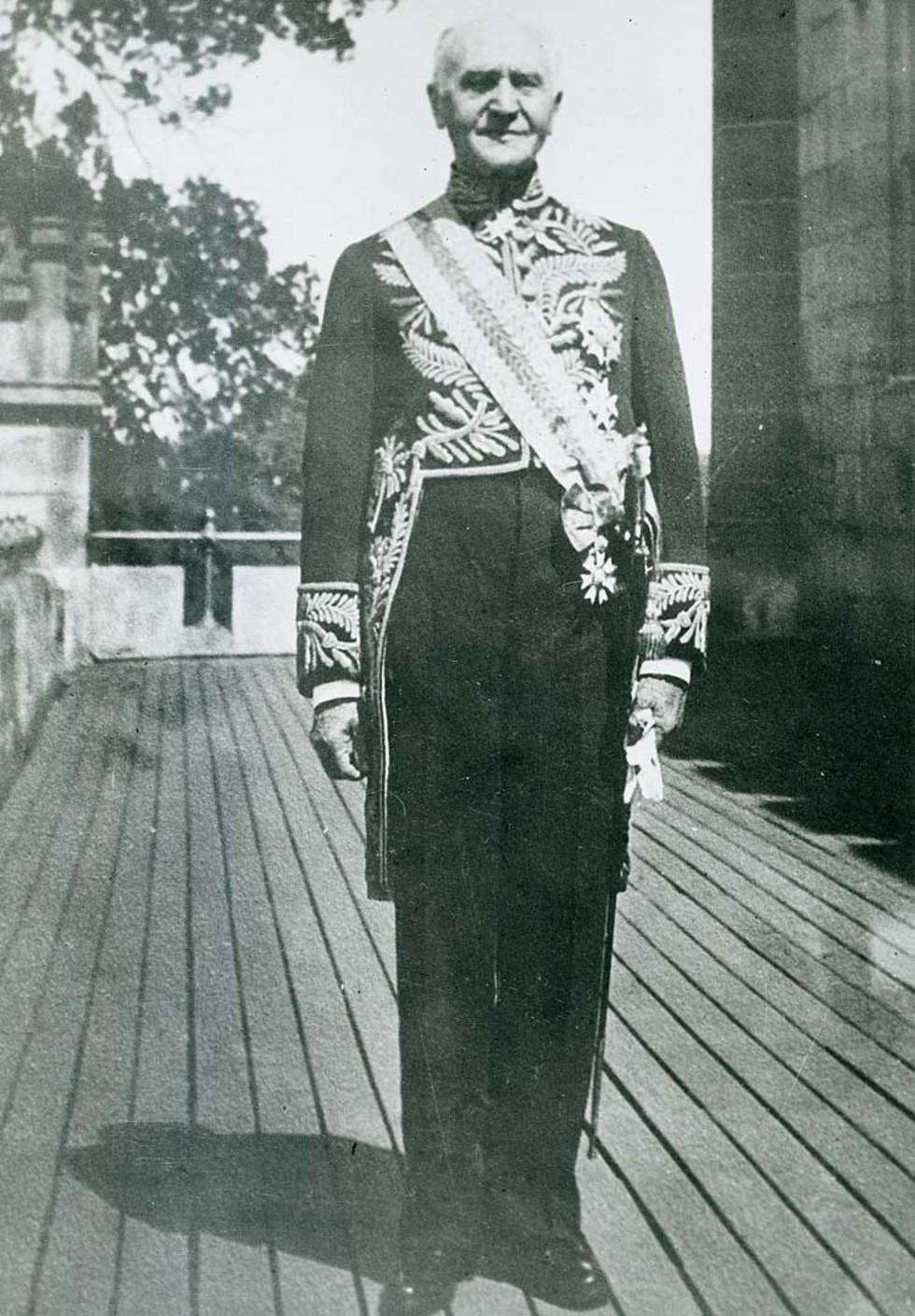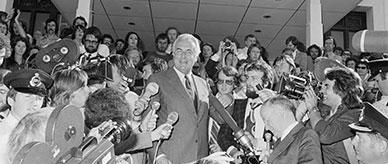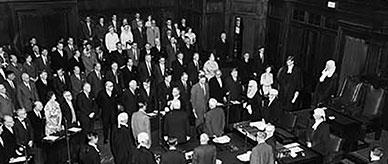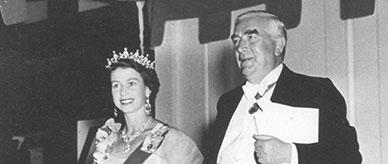


About this record
This full-length black-and-white photographic portrait is of Sir Isaac Isaacs, the ninth governor-general of Australia. The photograph was taken at the Governor-General's official Sydney residence, Admiralty House, and shows Isaacs wearing the gold-laced ceremonial uniform of office complete with sword and gloves, and the sash and badge of a Knight Commander of the Order of St Michael and St George.
Educational value
- The appointment of Sir Isaac Isaacs (1855–1948) is arguably the most significant ever made of an Australian governor-general. Isaacs, the son of Polish and British immigrants, was Australia's first native-born governor-general, the first in the British Empire to be appointed on the recommendation of a dominion prime minister and the first put forward by a government without first consulting the monarch about preferred candidates, which was a major constitutional step.
- From the first rumours in April 1930, the recommendation of Isaacs by the Scullin Labor government was opposed by the conservative press, the opposition party – the Nationalist Party of Australia – and by King George V (1865–1936) on the grounds that he was too old and that as an Australian and a former politician, Isaacs would inevitably be caught up in political issues and would be unable to fulfil the role of vice-regal representative. A further problem with Isaacs being the King's representative was that he was Jewish while the King was head of the established Church of England.
- After reluctantly accepting Isaacs' appointment in a personal interview with the determined Australian Prime Minister James Scullin (1876–1953), the King predicted that the appointment would be unpopular in Australia. In fact Isaacs proved to be very popular. His term as Governor-General (1931–36) coincided with the Great Depression, and his acceptance of a one-quarter reduction in salary and refusal to draw his judge's pension were both well received.
- Equally unfounded were fears that Isaacs would be unable to exercise his constitutional functions as Governor-General. In responding to a Senate petition to refuse approval for road transport regulations and to Scullin's request for the dissolution of parliament, Isaacs prepared lengthy written explanations of his decision in both cases to follow the advice of the elected government. In doing so, he took a democratic view of the role of a vice-regal representative.
- Isaacs' experience in the law, strong advocacy of federation and extensive public service had thoroughly prepared him for the office of Australian Governor-General. First elected to the Victorian Legislative Assembly in 1892, he served as Solicitor-General and Attorney-General. Elected to federal parliament in 1901, he became Commonwealth Attorney-General in 1905. In 1906 he was appointed to the High Court and in 1930 became Chief Justice of Australia.
- The uniform seen here was the ceremonial dress of a governor-general during the time of the British Empire and, like the elaborate state coach used at his swearing-in, was designed to reinforce the imperial dignity of the Crown. Where he could, Isaacs moved away from many of the trappings of office including luxurious official residences in Sydney and Melbourne, preferring to live in Canberra. He was only the second governor-general to do so.
Acknowledgments
Learning resource text © Education Services Australia Limited and the National Archives of Australia 2010.
Related themes
Need help with your research?
Learn how to interpret primary sources, use our collection and more.



